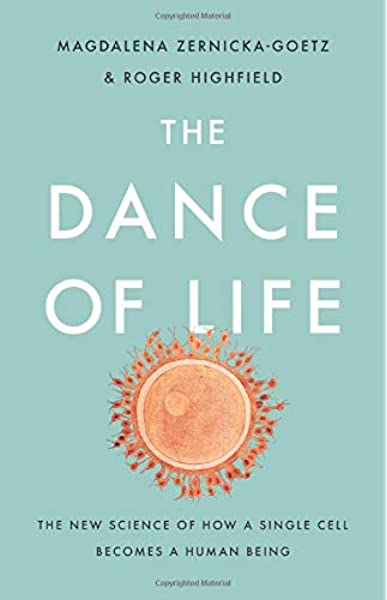
I haven’t discussed many books this year, but I’m currently reading The Dance of Life by Magdalena Zernicka-Goetz and Roger Highfield and I was struck by the relevance to advent. Zernicka-Goetz is a developmental biologist, which means she studies the processes by which a fertilized zygote transforms from a single cell to an entire organism like a mouse or a human. The book, cowritten with journalist Roger Highfield, is both a memoir of Zernicka-Goetz’ career and an introduction to her research and its context in the wider science of human development, including the medical implications. I had never really thought about Jesus going through this development process, so I thought perhaps we could explore that topic together as an avenue through the book.
Thanks to the chicken (and other birds and reptiles), egg is not just a kind of cell but also a distinct shape. The connection is so strong that the word oval comes from the Latin ovum or egg. But many egg cells, including human eggs, are much closer to a sphere, giving them symmetry in all directions. So how does a sphere with no obvious top or bottom, left or right become a whole human with a front different from the back, a left side different than the right side, and a head different from the feet? That question forms one of the main lines of inquiry for Zernicka-Goetz’ research. And a significant contribution she and her colleagues and students added to our understanding is that the sperm plays a role in orienting development. While not completely deterministic, the point at which the sperm attaches creates a bias for which parts of the fertilized egg go on to develop into different parts of the embryo. This was a controversial finding born from painstaking and ingenious methodology (more on all that later), but subsequent work from other labs has born out this conclusion.
And that conclusion is what first got me thinking about the connection to Advent. Traditional teaching holds that Jesus was conceived in a unique way, but we still use the language of conception. For me at least, that invites reflection on Jesus going through a development process with some connection to what other humans go through. Certainly the Gospels record a pregnancy; Jesus does not spring fully formed into the pages of Matthew or Luke. But if there was no sperm involved, what provided the signal to orient the development of Jesus’ embryo?
Now, I have asked that question in moderately technical language which comes from science, but I don’t believe a scientific answer is possible. We just don’t have the ability to gather data or devise experiments to apply the scientific method. I also don’t think the question poses any real challenge to the Gospel story. There is already a miracle involved here, so at most all we are adding by asking the question is specificity about the nature of that miracle. And I really don’t expect to ever get any kind of answer, or that one version of the answer is any more or less compatible with any particular theology.
So why bring up the question at all? Well, I think it helps us, or at least me, connect with the humanity of Jesus. For Jesus to be fully human, he became an embryo just as we all once were. That adds some texture to his humanity, and to the mystery of his incarnation. Because somehow, at some point, there is some difference in how the biological process is realized. The details of the difference seem less important than the fact that there is any difference at all. At the same time, it is a subtle difference, not one you could perceive looking at the infant, boy or man. Perhaps this was also part of the preparation for the world to receive Jesus; while the angels reassured the shepherds they brought joy and not fear, Jesus’ fully human appearance would have been reassuring in its own way.
Andy has worn many hats in his life. He knows this is a dreadfully clichéd notion, but since it is also literally true he uses it anyway. Among his current metaphorical hats: husband of one wife, father of two teenagers, reader of science fiction and science fact, enthusiast of contemporary symphonic music, and chief science officer. Previous metaphorical hats include: comp bio postdoc, molecular biology grad student, InterVarsity chapter president (that one came with a literal hat), music store clerk, house painter, and mosquito trapper. Among his more unique literal hats: British bobby, captain’s hats (of varying levels of authenticity) of several specific vessels, a deerstalker from 221B Baker St, and a railroad engineer’s cap. His monthly Science in Review is drawn from his weekly Science Corner posts — Wednesdays, 8am (Eastern) on the Emerging Scholars Network Blog. His book Faith across the Multiverse is available from Hendrickson.

Leave a Reply